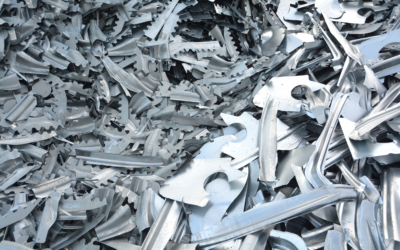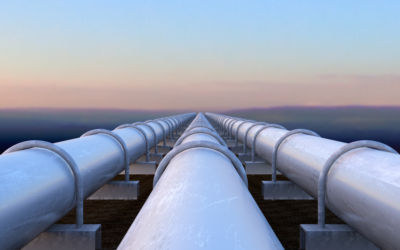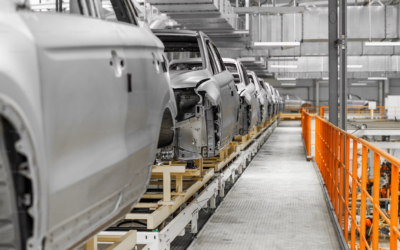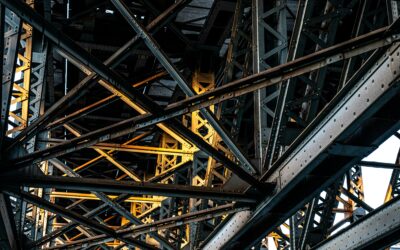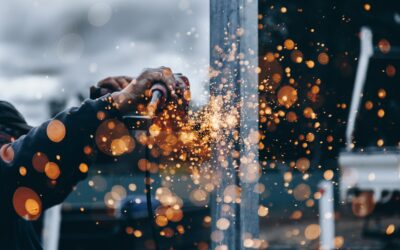Industry
Industry is key for the European Union to fully decarbonise by 2050. While the EU power sector has made significantly reduced its emissions, progress towards reducing industrial emissions has largely stalled.
Steel
Steelmaking is one of the main sources of greenhouse gas emission in the EU. In 2021, steel was responsible for 27% of all direct emissions from sectors covered by the EU Emissions Trading Scheme (ETS). Solutions to decarbonise the steel industry exist. They consist of either decarbonising the transformation of primary ore (e.g. using direct reduced iron, hydrogen and/or carbon capture and storage) or reducing the need for primary ore transformation through increased circularity.
Our research found that circularity solutions are the most immediately available at relatively low costs and with large abatement potential, as Europe is currently the largest exporter of steel scrap, with 20m tonnes exported annually.
Producing one tonne of primary steel using blast furnace / basic oxygen furnace technology (BF-BOF) emits about two tonnes of CO2, whereas producing one tonne of secondary steel using electric arc furnaces (EAF) creates virtually no CO2 if it uses green electricity.
Yet, EU policy unequivocally favours solutions based on primary ore transformation, which are more expensive, more resource intensive and have a higher carbon footprint:
- Under the EU Emissions Trading Scheme (ETS), steelmaking plants receive about 20 times more free emissions permits for processing primary ore in blast furnaces than for using circular routes.
- Under the ongoing review of the Free Allocation Regulation, the production of direct reduced iron (DRI) is poised to receive the same number of free allowances as blast furnaces.
- Hydrogen production (which could be used to produce direct reduce iron) is poised to be heavily subsidised, while the use of steel scrap is not.
- Under the Innovation Fund, innovative solutions (which include hydrogen-based or CCS-based production) are eligible to EU funding, whereas scrap use is not.
- Free allocation is to be phased out by 2034 with the introduction of a Carbon Border Adjustment Mechanism (CBAM). However, its implementation rules leave way to circumvention, which puts the system’s effectiveness (and phase out of free allocation) at risk.
Our Campaigns
Make flat steel production receive the same amount of free allowances regardless of feedstock and production route
We are actively promoting this solution within the EU Commission’s Climate Change Policy Expert Group (CCEG) on the Free Allocation Regulation. To this end we have pooled efforts with recycling industry organisations.
Modify the free allocation benchmark for hot metal and direct-reduced iron envisioned by the Commission, so that, in the case of integrated steel plants (plants that produce both OBMs and crude steel), free allocation becomes proportional to their flat steel output instead of hot metal/DRI
This would help establish a level-playing field between scrap and OBMs and requires minimal change to the Free Allocation Regulation while not (on average) affecting the number of free allowances received by these plants.
Properly account for the emissions embedded in metal scrap so as to avoid circumvention and a collapse of the CBAM
We are part of the EU Commission’s expert group on the CBAM and we have sent feedback to the consultation on monitoring and reporting rules.
Hydrogen
The importance of hydrogen is widely acknowledged within the EU. Industry actors are heavily promoting hydrogen as a decarbonisation solution across many sectors. In 2020, the European Commission launched its Hydrogen Strategy for a climate-neutral Europe which was followed by the launch of the European Hydrogen Bank (EHB) in 2023 which aims to boost renewable hydrogen investment.
From 2024, hydrogen production will receive free allowances under the EU ETS. Both free allowances and EHB subsidies will be proportional to the volumes of H2 produced. This stacking of support is likely to 1) disrupt price discovery, 2) fail to de-risk and 3) risk channelling hydrogen to applications with more viable alternatives that are more affordable and less resource intensive.
Our research outlines that, once accounting for the thermal electricity needed to replace the power consumed by electrolyers, the carbon footprint of green hydrogen is much higher than estimated by policies. Excessive subsidies for green hydrogen through cumulative support schemes create distortions compared to reuse practices and direct recycling. We are part of the Clean Hydrogen Alliance set up by DG Grow, through which we have made recommendations to the European Commission. We have responded to public consultations on the definition of green hydrogen, the EHB and the Innovation Fund. In addition, we have developed an online tool calculating the cost of switching from grey to green hydrogen in some applications compared to EU carbon prices, to help find out the level of subsidy needed to make green hydrogen profitable.
Our Campaigns
Avoid creating unnecessary demand for green hydrogen in sectors that have alternative decarbonisation options.
Aid should be distributed uniformly across competing solutions from the Commission through the European Hydrogen Bank and the Innovation Fund to Member States through the Net Zero Industry Act, in particular to activities not already receiving free emission permits under the EU ETS. Current policies distort competition for other low-carbon, less resource-intensive alternatives e.g recycling.
Reform the EU criteria for Green Hydrogen to address the criteria’s potential to incentivise reliance on fossil fuels, waste renewable electricity, increase the volatility of power prices and divert renewable energy otherwise useful for broader climate action.
Latest publications on Industry
Norsk Hydro – Alcoa – Sandbag – Bellona Joint Op-Ed : Closing the CBAM scrap loophole – A critical move for climate & competitiveness
The EU’s Carbon Border Adjustment Mechanism (CBAM) was established to extend Europe’s carbon pricing to imported products, aiming to create a level playing field between European industries and those from regions with less ambitious climate policies. However, in its...
Supply and demand in the EU ETS: It’s the hydrogen, stupid!
This note analyses the supply and demand balance of the EU ETS until 2030. It is based on Sandbag’s ETS Simulator, which was updated with the market’s latest data and policy parameters. • The EU ETS is on track to end its fourth phase in 2030 with a comfortable...
Report – A Scrap Game: Impacts of the EU Carbon Border Adjustment Mechanism
The Carbon Border Adjustment Mechanism (CBAM) was formally adopted on 17 May 2023, two years after the initial proposal by the European Commission. We are now in the midst of the CBAM transitional period and negotiations are continuing for its full entry into...
CEPS-Sandbag Joint Op-Ed – The EU should lead the green steel race… Or it could be left behind in the dust
A wave of low-carbon steel projects should be launched across the EU by 2030 but how commercially viable they are is still to be seen. According to Agora Industry, two critical factors underpin this uncertainty: a carbon price below EUR 150 per tonne of CO2 emissions...
From Niche to Mainstream: Shaping Demand for Green Steel
This report on the demand for green steel examines the impact of steel production using low-carbon technologies further down the value chain. Key Takeaways Due to weak carbon prices and high electricity costs, producing green steel incurs in a premium, which...
Update of the EU ETS free allocation rules: Polluting for free during a climate crisis
In this joint op-ed, first featured in Carbon Pulse, Sandbag policy officer Aymeric Amand and Carbon Market Watch policy expert Lidia Tamellini examine the revision of the Free Allocation Regulation. The EU Emissions Trading System (ETS) is one of the core EU...

WHAT WE DO
TOOLS
PUBLICATIONS
NEWSLETTER
Mundo-b Matogné. Rue d'Edimbourg 26, Ixelles 1050 Belgium.
Sandbag is a not-for-profit (ASBL) organisation registered in Belgium under the number 0707.935.890.
EU transparency register no. 277895137794-73.
VAT: BE0707935890.

